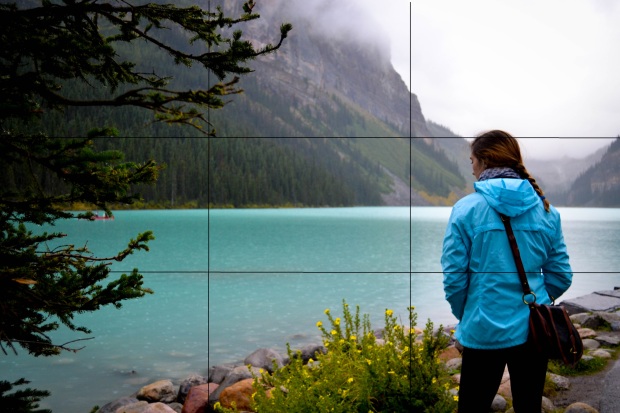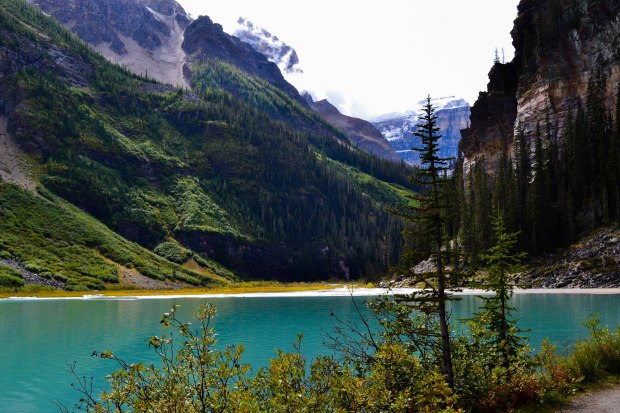While some take photos as an expression or form of art, others may take them to capture a memory or moment that is otherwise lost. Photography is all within perspective, and whether you are a professional photographer or amateur artist, photography is a skill anyone can learn.
Below are my top 3 beginner photography skills for the self-made travel photographer:
Rule of Thirds
This is one of my favorite quick and easy tips to turn some of the most generic photos into breathtaking images. The Rule of Thirds is breaking down the shot into thirds both horizontally and vertically. Then, place key pieces of the photo into these sectional panes. For example, when photographing an individual, keep them to the left or right of the photo as opposed to dead center. This will leave room for more of the scenery or adding various components to the shot.

Manual Mode
If you regularly shoot with your camera on auto mode, try playing around with it in manual. Adjust the exposure or shutter speed to capture time-lapsed photos or the stars at night. In manual mode, you will have more control over the shot and end up producing unique photos. It is also important for photographers to know the relationship between aperture (depth of field), ISO (a sensitivity setting commonly used for night shots to ensure the most vibrant colors), and shutter speed (capturing motion or low-light).
Understanding this relationship helps you get the best out of your camera and the shot. In short, aperture, ISO, and shutter speed all have one common underlying factor: light exposure. When you manually control the aperture, you are determining how much light will travel through the lens by adjusting the size of the hole inside. Similarly to opening curtains and exposing a room to sunlight, adjusting the aperture allows you to let in as little or as much light into the picture as you’d like. This light then travels through the shutter curtain, which is like a closed window that opens when needed based on the shutter speed. The shutter speed determines how long or short the sensor receiving the light will be exposed for. From here, the sensor gathers the light based on sensitivity settings known as ISO.
A good visual to represent how ISO, aperture, and shutter speed work together can be seen in the images below. When the lens aperture is small, not much light will reach the sensor. In this case, the sensor would need more time to collect the light, therefore needing a longer shutter speed. Adversely, when lens aperture is large, more light can reach the sensor; hence, having a long shutter speed as in the first example would lead to “overexposure” of the photo. With more light and a large lens aperture, a shorter shutter speed is necessary to capture the correct exposure.
Get Lost!
Lastly, and most importantly, get lost! Wander into markets, hike the extra hundred feet, wake up early for that perfect sunrise picture: there are endless amounts of ways you can customize and personalize your photos by capturing the essence of the location through the people, places, and things that would have otherwise gone unnoticed. Be observant and adapt to the pace of life through your photography. Whether you use a wide shot for a cityscape or skyline or long exposure for the perfect waterfall picture, have fun with your travel photography.

Travel photography is something in and of itself. While some places look like picture-perfect postcards, others may be hidden gems. Nonetheless, some of the most beautiful photos I have seen are of obsolete and remote places or objects. I encourage you to experiment via manual mode, practice the rule of thirds, and most importantly, have fun and get lost!
This post was written by Megan, a cube-bound world traveler who shares her experiences and photos on her site, Out of Office Org. You can keep up with her travels on her Facebook page, her Twitter account and her Instagram account.


Great info, thanks!
LikeLiked by 2 people
Of course!
LikeLike
Amazing tips. I’m not a pro photographer but i do photography in my free time. I would definitely take these into consideration now on.
LikeLiked by 2 people
Thank you! I am by no means professional either but it is fun to practice certain techniques, experiment with the shots, and have fun!
LikeLiked by 1 person
Incredibly helpful thank you, I have been using the rule of thirds in my paintings also, it really helps composition 🙂
LikeLiked by 2 people
Thank you! Yes, I find the rule of thirds applicable in a lot of things.
LikeLike
Amazing tips, thank you for sharing your knowledge!!
LikeLiked by 1 person
Of course! Anytime. Thank you!
LikeLike
Some great tips!
LikeLiked by 1 person
Thanks!
LikeLike
Good tips. The rule of thirds is a good tip, nevertheless, sometimes rules need to be broken.
That’s the beauty of it, know the rules and go ahead and break them. Experiment, play around, learn and find your own style.
LikeLiked by 2 people
I agree completely! I find that the symmetry with a centered subject in photos may make for a better picture than practicing the rules of thirds. As they say, beauty is in the eye of the beholder 🙂
LikeLiked by 1 person
Thank you again! Collaborating with you was a pleasure! I look forward to reading more posts and guest posts on your site!
LikeLiked by 1 person
You’re welcome! It was a pleasure on my end as well. This was really fun! Thank you for everything!
LikeLiked by 1 person
Great tips, thanks!
LikeLiked by 2 people
Thank you Katie!
LikeLike
Wow great tips!
LikeLiked by 2 people
Thanks Jo Smith! I appreciate it.
LikeLiked by 1 person